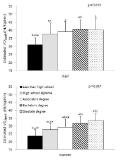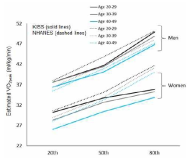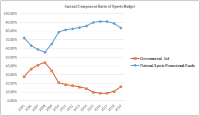PURPOSE This study presents policy proposals based on literature review and document analysis in relation to sport concussion. METHODS Online documents were collected from sports organizations of the United States, the United Kingdom, and South Korea that either supervise sports concussion management policies or govern specific sports at different levels. RESULTS The results and implications of the study were as follows. First, safety education on sports concussion should be strengthened quantitatively and qualitatively, be required by all sports stakeholders, and will need to be executed by utilizing new technology platforms. Second, sports governing bodies must present a concussion safety policy tailored to each sport by distinguishing between youth and professional sports. Finally, discussions regarding the legalization of domestic sports concussion safety policies should take place in a timely manner. CONCLUSIONS These precautionary approaches would contribute to raising awareness on concussions in sports and help build a safer environment for sports.
Purpose The purpose of this study was to analyze the research topics of the articles which were published through European Sport Management Quarterly(ESMQ) from 2009 to 2018. The prior topic analysis studies of the ESMQ classified topics based on the key words using NASPE-NASSM SMPS categories. Therefore they couldn't fully reflect the content of the articles. Methods The topic modeling of the current study was conducted with the Latent Dirichlet Allocation(LDA) which generates topics based on the word usage in the article. A total of 265 articles were converted from 'pdf' format to 'txt' ANSI format for topic modeling analysis. The whole topic modeling process was done using R program and the model was set to generate 10 topics from the article. Results The 3 sport management experts were hired to label the name of the topics and the name of the topics are as follow : (1) Impact of mega sport event, (2) Cause-related marketing, (3) Factors affecting the results of the competition, (4) Managing sport organization, (5) European sport leagues, (6) Strategic management, (7) Sport economics, (8) Sport in communities, (9) Sport consumers, (10) Elite sports. It is not quite possible to compare the results of the current topic modeling results with the previous ones because of the methodological differences. However, even though the standards are different, Sport marketing topic showed the largest growth among the 10 topics extracted. Conclusions This study used the LDA probabilistic algorithm to analyze research topics, which made the analyses more objective and wholistic. However, the insights of the researchers were still needed to interpret and labeling the topics.

To provide the distribution of cardiorespiratory fitness including Bruce treadmill exercise time and estimated peak oxygen uptake (VO2peak) and investigate association with cardiorespiratory fitness and metabolic syndrome, sedentary lifestyle, or education level among Korean adults. Analysis of data on 2,006 adults (19-64 yr) who had completed a maximal grade treadmill exercise test, from the Sports Institute of Sports Science Fitness Standards (KISS FitS) project 2014-2015. The mean maximal exercise time was 11’26’‘, 11’18’‘, 11’06’‘, 10’03’‘ and 8’51’‘ (minutes and seconds) for men 19-29, 30-39, 40-49, 50-59 and 60-64 years of age, respectively, for women, it was 9’49’‘, 9’09’‘, 8’42’‘, 8’01’‘ and 7’33’‘ for the corresponding age groups. The mean peak oxygen uptake was estimated as 42.3, 41.8, 41.2, 37.6 and 33.6 ml/kg/minute for men 19-29, 30-39, 40-49, 50-59 and 60-64 years of age, respectively, For women, it was 34.0, 31.8, 30.3, 28.0 and 26.4 ml/kg/minute for the corresponding age groups. A positive association between cardiorespiratory fitness level and education level was observed for both men and women. Furthermore, participants with sedentary lifestyle had a significantly lower cardiorespiratory fitness than participants with activity lifestyle. Finally, Men with moderate and high fitness level had 50% and 87% lower odds for the metabolic syndrome, and women had 48% and 50% lower odds for the metabolic syndrome, respectively, than the ones with low fitness level after adjustment for age, smoking, alcohol intake, and sedentary lifestyle. These results can be used to track future Korean assessments and to evaluated interventions. The differences in fitness status by education level, sedentary lifestyle or metabolic syndrome can also be used to develop health policies, program and educational services.



The purpose of this research is to provide the information about sports injury by surveying and analyzing a result, and to lead analytic and scientific training among the subjects being elite summer sport athletes. All sports injuries are recorded on injury report form and the following results were obtained. In Cycle sport, the prevalence of injuries of the low back, knees were highest. and In Table tennis sport, the prevalence of injuries of the ankle was highest due to the chronic fatigue. The prevalence of injuries of the shoulder, low back were highest due to the overuse of joints. In Badminton sport, the prevalence of injuries of low back, knees, ankles were highest by overtraining. In Gymnastics, the prevalence of injuries of the low back, knees, ankles were highest. In Archery sport, there is a lot of injuries to the shoulder and neck. In Weight lifting sport, the prevalence of injuries of the low back, knees, and ankles were highest. In Golf sport, the prevalence of injuries of knees, low back were highest. In Hockey sport, the prevalence of injuries of ankles, knees, low back were highest. In Boxing sport, the prevalence of injuries of hands, shoulder, the low back were highest, In Judo sport, there are overall damage occurred in parts of the whole body, but the prevalence of injuries of ankles, knees, low back were highest. In Fencing sport, the prevalence of injuries of the low back, knees were highest. In Wrestling sport, although there is a difference slightly depending on freestyle and Greco-Roman, but the prevalence of injuries of knees, ankles, low back were highest. In Handball sport, the prevalence of injuries of ankles, knees were highest. In Taekwondo, the prevalence of injuries of ankles, knees, feet were highest.
Purpose The purpose of this study is to examine the location, rate, cause, and types of injuries according to the injured area by age and sports in female athletes. Methods The subject of the study was 426 female athletes who were registered as combat sports(Judo, Taekwondo, Fencing) athletes at the Korean Sports & Olympic Committee. We collected the data via online questionnaires, and conducted a frequency analysis using R statistics program. Results As a result, 51.4% of athletes experienced injuries in the past year, and the highest injury rate was shown in Taekwondo-University(0.43) during competition and Taekwondo-Professional(5.55) during training. The cause of injuries during competition was mainly due to 'as a result of me or the opponent's hittings, skills, or fouls' among internal factors, and 'recurrent injuries' among external factors. Among internal factors during training except for torso area and professional athletes, most of the injuries were also caused by ‘as a result of me or the opponent's hittings, skills, or fouls’ and ‘recurrent injuries’ among external factors. The frequency of injury was the highest in the lower extremity area across all age groups. The most frequently injured area, in the case of Judo, is skin-bleeding in the head, skin-bruise, muscle-inflammation, bone-fracture, spondylopathy(disc, stenosis, etc.) in the torso, muscle-inflammation in the upper extremity, ligament-sprain, rupture in the lower extremity. Taekwondo athletes had skin-bruise in the head, upper and lower extremities, and muscle-inflammation in the torso area, as the frequent injury cases, and Fencing athletes had all skin-bruise regardless of injuries. Conclusions The results of this study will be used to take measures for preventing injuries or to change training programs.

Purpose This study focused on analyzing the policies regarding operation of Sportstoto, a sole legal sports betting business in Korea. Methods In order to fulfill the research goal, literature review on reports, articles, and statistics from Ministry of Culture, Sports and Tourism, National Gambling Control Commission, Korean Sports Promotion Foundation, and other precedent studies was conducted. Results Currently Sportstoto fails to maintain its competitiveness due to inconvenient betting process, lack of product diversification, and low payout rate, resulting in the growth of illegal sports gambling. In addition, governmental aid for sports budget has diminished consistently, while at the same time the revenue cap regulation for betting industry restrains the development of Sportstoto and disturbs the gathering of sports budget, which appears to be a policy contradiction. Moreover, there are no specific guidelines for the expenditure of Sportstoto revenue which function as a budget. Conclusions This study suggests three ideas to overcome these problems. First is the alleviation of regulation in non-monetary area so that Sportstoto can improve its competitiveness against illegal sports gambling. Second is the clear establishment of policy regarding sports budget, either to foster Sportstoto as a fundraising business, or to enlarge governmental allocation for the budget. Lastly, institutional management must be provided for the expenditure of Sportstoto revenue as to follow government’s sports policies.

[Purpose] This study aims to examine the research trends in Korean women’s sport history and provide suggestions for future research by reviewing journal articles conducted in the last ten years (2007-2016). [Methods] The articles were selected from the Korean Journal of History for Physical Education, Sport, and Dance, which is the only, representative sport history journal in South Korea. 66 articles identified as studies of women’s (or women-related) sport history were analyzed in five categories, including a) period, b) theme/topic, c) purpose, d) method, and e) country. [Results] Specifically, the analysis by period showed that 90% of the research focused on modern and contemporary history, while only 7% of the research was set in pre-modern history. According to the analysis by theme/topic, genre has been studied most often with 36%, followed by figure (20%) and facility/institution/organization (15%). By the criteria of purpose, it was found that the majority of the research (48%) focused on historical evolution and transition, while the research on comparison/relation was of little scholarly interest. Regarding the category of method, textual analysis was used most often, with 70% followed by oral life history (27%). By the criteria of country, the largest ratio of papers studied Korea (75%) while only 3% of studies examined other East Asian countries, such as China or Japan. Comparative, diasporic, or transnational studies were the second most popular subcategory (11%). [Conclusion] According to the results, it was acknowledged that there has been a significant lack of interest in women’s sport history by Korean scholars and “sport herstory” is largely underresearched. In addition, the excessive concentration on a specific period or a particular theme was also exposed. To rectify the biased research practice and promote scholarly growth and enhancement in both academia of Korean women’s sport history and Korean sport history, it is necessary to consider the expansion of historical materials, application of new methodology, cross-disciplinary conversation, and theorization in studying women’s sporting experiences.
The recent increases in international efforts for designing and implementing initiatives and programs about 'development though sport' have accompanied the remarkable growth of the 'sport for development and peace'(SDP) sector. This global prevalence of SDP and the resulting augmentation of its social significance have rendered a growing scholarly attention to SDP in the sociology of sport. Moreover, a grounding rationale for SDP initiatives to enhance positive individual and social changes through sport has also offered an interesting research area for the sociology of sport. This paper aims to review sport sociology literature about SDP. Major findings include a set of descriptive reports about the institutionalization of SDP and critical/reflective approaches to SDP's outcomes and limitations. It is noted that the institutionalization of SDP consists of ideological and policy endeavors, SDP organizations and institutions, and classifications of SDP project types. Despite of positive outcomes resulted from SDP programs, it has been highlighted that the ongoing issues and limitations of SDP include ambiguities of development concept, the Global North hegemony, unilateral top-down program management, and the inherent complexity and lack of program monitoring/evaluation.
As an attempt to think about the popularization of Korean sport history, this paper discusses three main things. First, it will be introduced what public/popular history is, how it has been developed, and why it is important to history as an academic discipline. Second, it will be summarized how sport historian embraced public/popular history into their practices in terms of what theoretical, critical, and methodological aspects they have focused. Third, I will discus why public/popular history is useful in the ways in which Korean sport history envisions its popularization in Korean society. To be more specific, I highlight two ideas: an insight for understanding sport history as a process and sport historiansʼ role of critic. Based upon these two, I will argue that Korean sport historians might need to actively embrace practices of public/popular history into their studies of the Korean sporting past.
Purpose The purpose of the study is to review the current trends of Korean research on sport volunteering. Methods For the research purpose, 74 KCI-listed articles published were investigated. Results The main topics of 60 articles were sport volunteering and the sub-topic or factor of the other 14 articles was sport volunteering. These articles were classified based on the publishing year, type of journal, academic area, research method, research topic, research sample, volunteer characteristics and volunteer area. Research on sport volunteering has been continuously conducted but the number of related publications has been increased since 2009. Sport volunteer research articles have been published in various sport related journals. However, the majority of the research articles are in the research areas of sport management, sport pedagogy, adopted physical education, and sport policy. Regarding the research method, more than a half of the articles were the ones using quantitative research methods, but qualitative research methods were often used as well. The majority of the research were conducted on volunteers but the research conducted on the beneficiaries of volunteer services were few. Many of the volunteers researched were college students. Event volunteering and educational volunteering were common volunteering areas in the research articles. Conclusions Korean researchers should not only conduct more research on sport volunteering with various topics but also improve the quality of the research after conducting the in-depth review of theories and literature and the better understanding about Korean situation on sport volunteering.